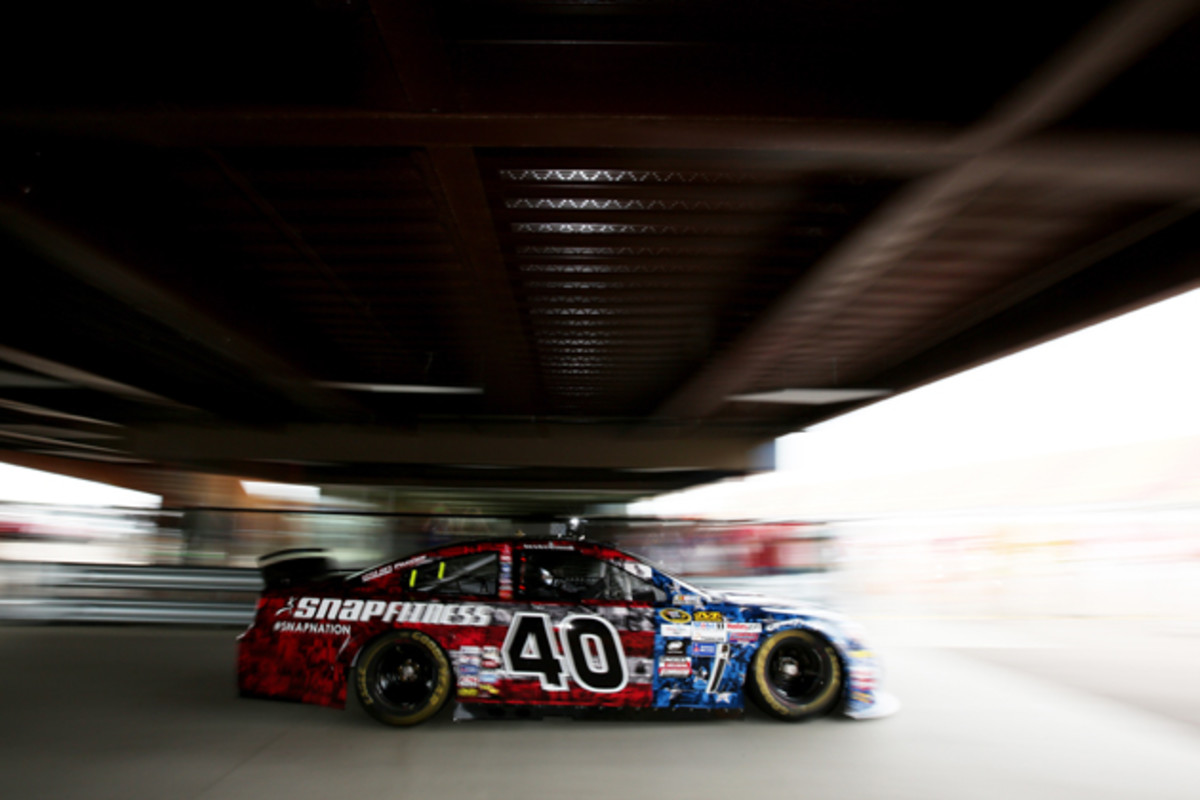Full throttle: NASCAR's Landon Cassill trains like an endurance athlete

The Coca-Cola 600 is NASCAR's version of a marathon: a 600-mile race over 400 laps that takes nearly four hours to finish. Held annually during Memorial Day Weekend, it’s the longest event on the sport’s 36-race calendar and a true test of endurance, spanning from daylight into dusk.
Apparently, completing it wasn’t a strenuous enough effort for Landon Cassill. On May 24 the 26-year-old from Fairfax, Iowa, finished 39th, then swapped his number 40 Chevy for a pair of sneakers and ran 13.92 miles from Charlotte Motor Speedway to the NASCAR Hall of Fame in 1:41:49 (an average of 7:19 per mile). “It's a mental challenge, just like in a race car,” says Cassill of his long-distance runs. “We are endurance athletes.”
Six-time Cup Series champ Jimmie Johnson, who has ran marathons and triathlons, inspired Cassill’s focus on fitness.
“[Jimmie] was always someone who I looked up to and I always compared myself to him—my driving style is similar to his,” Cassill says. “But I looked at him, the way he was training, his endurance, the way was he was as an athlete, and I was like, ‘I’m nothing like Jimmie Johnson.”
Through the influence of his racing idol and his father, who was a track star at his high school in Cedar Rapids, Iowa, Cassill increased his training load and intensity. After six months of running, biking and swimming in preparation for the Ironman 70.3 World Championships in Austria on Aug. 29, Cassill is feeling the benefits behind the wheel.

“There are so many conditions in the car stacked against you while you’re trying to maintain focus,” says Cassill of the temperature, high speed and life-threatening factors drivers face on the track. “In the car you need mental clarity to make split-second decisions and in a workout you need it to fight off the pain.”
Cassill also says his Ironman training has benefitted the dynamic of his race team and guided him towards adopting a plant-based diet. While he typically ate vegetarian meals at home because of his wife’s preferences, Cassill ate differently on the weekends—“I started to notice a difference between how I felt at home after workouts and how I felt on the road”—and he finally made the switch. As a result of his new outlook on nutrition and fitness, Cassill signed on as a sponsor for gym chain Snap Fitness and supports plant-based meat substitute Beyond Meat.
Training with Ian Walsh: Building mind and body to take on the biggest waves
“I’ve become really interested in the metabolic side of things,” says Cassill. “Hydration and nutrition are the ‘it’ factors as a pro athlete.”
During a race Cassill's heart rate resembles that of a marathoner, hovering between 70% and 90% of his maximum. He prepares for that stress by training six to seven days a week, sometimes in two sessions a day, while still logging nine to 12 hours a week behind the wheel of his car. Cassill's trainer, Jamey Yon, says he creates structured, detailed workouts based on biometric feedback for the 5'7", 155-pound Cassill, who like most drivers is accustomed to monitoring the meters on the dashboard. “Instead of perceived effort, it’s based on numbers like heart rate or power output,” Yon says.
On a bike, Cassill must hit specific power output values (measured in watts) throughout the workout. In an interval running session or during hill repeats, he focuses on the percentage of his max heart rate. Yon also measures Cassill’s fitness through his 5K pace, taking factors such as humidity, sleep, stress and fatigue from a race into consideration.
In the future, Cassill hopes to use the devices made to measure running performance to capture data during car races and quantify how fatigued his body is after driving.
“By the end of a race, the car’s brakes are hot, you’ve boiled the fluid and burnt up the tires, so you have to manage it over the course of the race,” says Cassill. “I visualize a workout like a NASCAR race—you just have to manage your body.”
DRINK UP
Temperatures can exceed 120° inside a NASCAR cockpit, and Cassill could lose up to 15 pounds during a three-hour race if he didn't drink anything. Here, trainer Lon offers tips on staying hydrated and how to tell if you're succeeding.
Don't Chug
Getting to the starting line with too much water in your system can be detrimental. Drink the standard eight to 10 glasses a day and make sure to lightly salt your food the day before a race to avoid cramping.
Hop on the Scale
Weighing yourself before and after a workout can be an indicator of how much fluid your body is losing during exercise. Every pound lost is equal to 16 ounces of fluid, Yon says.
Check the Color
Monitoring your urine color is another method of measuring your body's hydration level. Anything dark is a sign of dehydration; light yellow is the gold standard.
